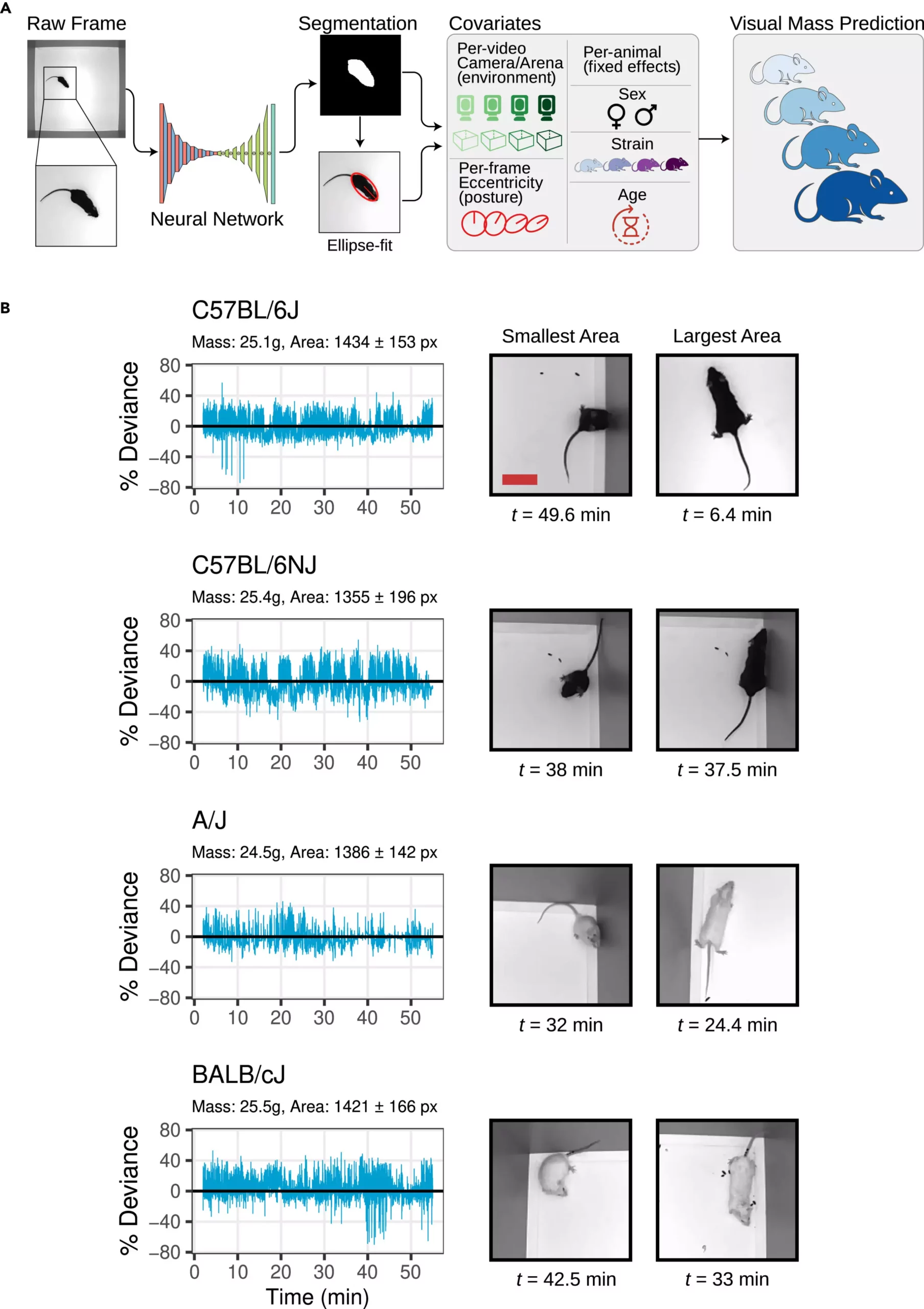One of the vital metrics in both human health and biomedical research is body mass. It serves as an indicator of overall health and can predict potential health issues. For researchers working with mice, measuring body mass has traditionally been a stressful and unreliable process. The traditional method involves removing the mice from their cages and placing them on a scale, which can introduce variables that affect the outcome of experiments. Additionally, these measurements are typically taken infrequently, further complicating the accuracy and reproducibility of data.
A research team led by Jackson Laboratory (JAX) Associate Professor Vivek Kumar, Ph.D., has developed a groundbreaking method using computer vision to accurately and continuously measure mouse body mass. This non-intrusive approach aims to reduce stress for the mice and improve the quality and reproducibility of biomedical research. The team, including computational scientists and software engineers, turned to computer vision technology to analyze a large mouse video dataset and develop a method to calculate body mass with less than 5% error.
Developing this method was not without its challenges. Unlike static subjects used in industrial farming, mice are highly active and flexible, frequently changing posture and shape. The team also worked with 62 different mouse strains, each with unique sizes, behaviors, and coat colors. This required the use of multiple visual metrics, machine learning tools, and statistical modeling to achieve the desired level of accuracy. By training their models with genetically diverse mouse strains, they ensured that the method could handle the visual and size distributions commonly seen in laboratory settings.
The new method offers several key advantages for researchers. It can detect small but significant changes in body mass over multiple days, which is crucial for studies involving drug or genetic manipulations. Additionally, it has the potential to serve as a diagnostic tool for general health monitoring. The method can also be adapted to different experimental environments and other organisms in the future, making it a versatile tool for a wide range of preclinical studies.


Leave a Reply